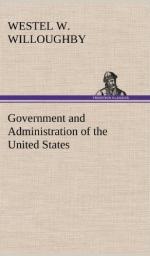In forming the national judiciary, the objects to be obtained, difficult of achievement, were, to use the words of Judge Curtis (Federal Courts of United States): “To construct a judicial power within the Federal Government, and to clothe it with attributes which would enable it to secure the supremacy of the general constitution and all of its provisions; to give to it exact authority that would maintain the dividing line between the powers of the Nation and the States, and to give to it no more: and to add to these a faculty of dispensing justice to foreigners, to citizens of different States and among the sovereign States themselves, with a more even hand and with a more assured certainty of the great ends of justice than any State power could furnish—these were objects not readily or easily to be obtained, and yet they were obtained with wonderful success.”
The establishment of the federal judiciary is given in a few words in the Constitution: “The judicial powers of the United States shall be vested in one Supreme Court and in such inferior courts as Congress may from time to time ordain and establish.”
In pursuance of this clause, Congress passed in 1789, what is known as the “Judiciary Act,” the first section of which reads: “The Supreme Court of the United States shall consist of one chief justice and five associate justices.” This act also established the inferior federal courts, the circuit and district courts, and also defined and fixed their fields of jurisdiction, i.e., the class of cases which these courts could have power to try.
The Supreme Court stands at the head of our national judiciary. Its field of jurisdiction is the construction and exposition of the Constitution of the United States. Hon. S.F. Miller, senior justice of this court, speaking of the high character of the duties performed by this court, said: “This court, whether we take the character of the suitors that are brought before it, or the importance of the subjects of litigation over which it has final jurisdiction, may be considered the highest the world has ever seen. It has power to bring States before it, States which some of our politicians have been in the habit of considering sovereign, not only when they come voluntarily, but by Federal process they are subjected, in certain cases, to the judgment of the court. Whatever these States may have been at the time of the formation of the Constitution, they now number their inhabitants by the millions, and in wealth and civilization are equal to many of the independent sovereignties of Europe.”
There have been considerable changes in the structure and duties of the Supreme Court since its formation. At present there are nine justices, instead of six. There is now one annual term of the court held, beginning on the 2d Monday of October and continuing until about May 1. Of the nine justices six constitute a quorum.
The Supreme Court first met in February, 1790. Since its organization it has had eight chief justices, in the following order.




